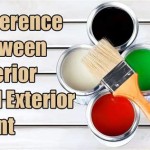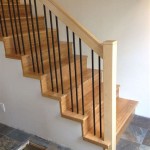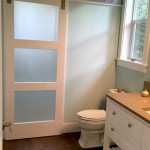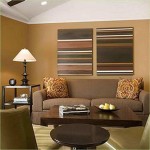Interior Design Picture Ideas: Inspiration and Guidance
Interior design is a multifaceted discipline concerned with the art and science of enhancing the interior of a space to achieve a healthier and more aesthetically pleasing environment for the people using it. It encompasses a wide range of elements, including spatial arrangement, color palettes, furniture selection, lighting, and decorative accessories. Visualizing the potential of a space through pictures and design concepts is a crucial step in the planning and execution of any interior design project. These visual aids provide inspiration, demonstrate possibilities, and assist in communicating the design vision to clients, contractors, and other stakeholders.
Exploring various sources of interior design pictures is a valuable exercise for anyone embarking on a home renovation, space redesign, or simple room refresh. These pictures serve as a catalyst for creativity, sparking ideas and providing a framework for realizing design aspirations. From online platforms and design magazines to architectural portfolios and specialized books, a wealth of visual resources are readily available to fuel the imagination and guide the design process.
The value of interior design pictures extends beyond simple aesthetic appeal. They also offer practical insights into space planning, functionality, and the integration of various design elements. By carefully analyzing these visual examples, individuals can learn to identify successful design strategies, understand the impact of different materials and textures, and appreciate the nuances of lighting and color schemes. This knowledge can then be applied to their own projects, resulting in spaces that are both visually appealing and highly functional.
Understanding Design Styles Through Visual Examples
One of the primary benefits of studying interior design pictures is the opportunity to familiarize oneself with different design styles. Each style possesses its own distinct characteristics, including specific color palettes, furniture silhouettes, material choices, and decorative motifs. By examining examples of these styles in practice, it becomes easier to discern their key features and determine which resonates most strongly with personal preferences.
For instance, a picture showcasing a minimalist interior might highlight clean lines, neutral colors, and a focus on functionality. Furniture is typically sparse and uncluttered, emphasizing open space and a sense of calm. In contrast, a picture of a bohemian-style room might reveal a vibrant mix of colors, patterns, and textures. Furniture is often eclectic and comfortable, with an emphasis on personal expression and a relaxed atmosphere.
Other popular design styles include modern, traditional, industrial, Scandinavian, and coastal. Modern design often incorporates sleek, geometric forms and utilizes materials like metal, glass, and concrete. Traditional design tends to embrace classic furniture pieces, rich fabrics, and ornate details. Industrial design draws inspiration from factories and warehouses, featuring exposed brick, pipes, and reclaimed materials. Scandinavian design emphasizes simplicity, functionality, and natural light, often incorporating light wood tones and muted colors. Coastal design evokes a sense of the seaside, with light, airy spaces, natural textures, and nautical-inspired accents.
By exploring a variety of interior design pictures representing different styles, individuals can develop a comprehensive understanding of the design landscape and identify the stylistic elements that best align with their own tastes and lifestyles. This knowledge is invaluable when making decisions about furniture selection, color choices, and overall design direction.
Analyzing Space Planning and Functionality
Beyond aesthetics, interior design pictures provide crucial insights into space planning and functionality. These visual examples demonstrate how different elements can be arranged to optimize flow, maximize usability, and create a comfortable and efficient living environment. Careful attention to space planning is essential for ensuring that a room feels balanced, inviting, and conducive to its intended purpose.
For example, a picture of a well-designed living room might illustrate how furniture is arranged to encourage conversation and create a focal point. The placement of seating, tables, and lighting fixtures can significantly impact the overall atmosphere of the room and its ability to accommodate social interaction. Similarly, a picture of a thoughtfully organized kitchen might showcase how different work zones are arranged to streamline cooking and food preparation.
Analyzing these visual examples allows individuals to consider their own needs and priorities when planning the layout of their spaces. Questions to consider include: How will the space be used? What are the primary activities that will take place in the room? How can furniture and accessories be arranged to facilitate these activities and create a comfortable and functional environment?
Furthermore, interior design pictures can demonstrate how to optimize space in smaller areas. Techniques such as utilizing vertical storage, incorporating multi-functional furniture, and employing clever spatial arrangements can help to maximize the perceived size of a room and create a sense of openness. These visual examples provide practical inspiration for making the most of limited square footage.
By studying interior design pictures with a focus on space planning and functionality, individuals can develop a keen understanding of how to create spaces that are both visually appealing and highly efficient. This is essential for ensuring that their design projects meet their practical needs and enhance their overall quality of life.
Exploring Color Palettes, Materials, and Textures
The skillful use of color, materials, and textures is fundamental to successful interior design. Interior design pictures offer a valuable opportunity to explore different combinations of these elements and understand their impact on the overall aesthetic of a space. Color palettes can evoke specific moods and emotions, while materials and textures add depth, dimension, and tactile interest.
For example, a picture featuring a room with a predominantly cool color palette, such as blues and greens, might convey a sense of tranquility and relaxation. These colors are often associated with nature and can create a calming atmosphere. In contrast, a room with a warm color palette, such as reds and oranges, might evoke feelings of energy and excitement. These colors can add vibrancy and warmth to a space.
The choice of materials and textures also plays a significant role in shaping the overall aesthetic. Natural materials like wood, stone, and linen can add warmth, authenticity, and a connection to the outdoors. Smooth, polished surfaces like glass and metal can create a contemporary and sophisticated look. Textural elements like rugs, cushions, and throws can add depth, dimension, and tactile comfort.
Interior design pictures can demonstrate how to effectively combine different colors, materials, and textures to create visually appealing and harmonious spaces. They can also highlight the importance of considering the interplay of light and shadow, as well as the overall balance and composition of the room.
By studying these visual examples, individuals can learn how to select colors that complement each other, how to choose materials that align with their design style, and how to incorporate textures that add visual interest and tactile appeal. This knowledge is essential for creating spaces that are both aesthetically pleasing and personally meaningful.
Beyond the considerations already presented, the impact of lighting cannot be overstated. Interior design pictures often showcase the strategic use of both natural and artificial lighting to enhance the ambiance and functionality of a space. The placement of windows, the selection of light fixtures, and the use of dimmer switches all contribute to the overall lighting design. Analyzing these visual examples can provide valuable insights into how to create a well-lit and inviting environment.
Furthermore, the integration of artwork and accessories is another key element often highlighted in interior design pictures. These decorative elements can add personality, character, and a sense of individuality to a space. From paintings and sculptures to plants and decorative objects, artwork and accessories can transform a room from being merely functional to being truly expressive.
Ultimately, exploring interior design pictures is an ongoing process of learning and discovery. By carefully analyzing these visual examples, individuals can develop a deeper understanding of design principles, cultivate their own aesthetic sensibilities, and gain the confidence to create spaces that reflect their unique personalities and lifestyles.

18 Interior Design Ideas Home
/s3.amazonaws.com/static.havenly.com/prod/assets/boards/4227759/board_4227759_97d4b027?strip=all)
25 Interior Design Ideas Havenly

10 Contemporary Interior Design Ideas To Transform Your Home

15 Best Modern Interior Design Ideas Of 2025 Decorilla

Latest Interior Design Ideas For Your Home Decor Wooden Street

15 Best Modern Interior Design Ideas Of 2025 Decorilla

15 Best Modern Interior Design Ideas Of 2025 Decorilla

25 Interior Design Ideas Havenly

How To Design A Room Like An Interior Designer Step By Greenhouse Studio

100 Home Decor Ideas The Ultimate Inspiration For Interior Designers
Related Posts








